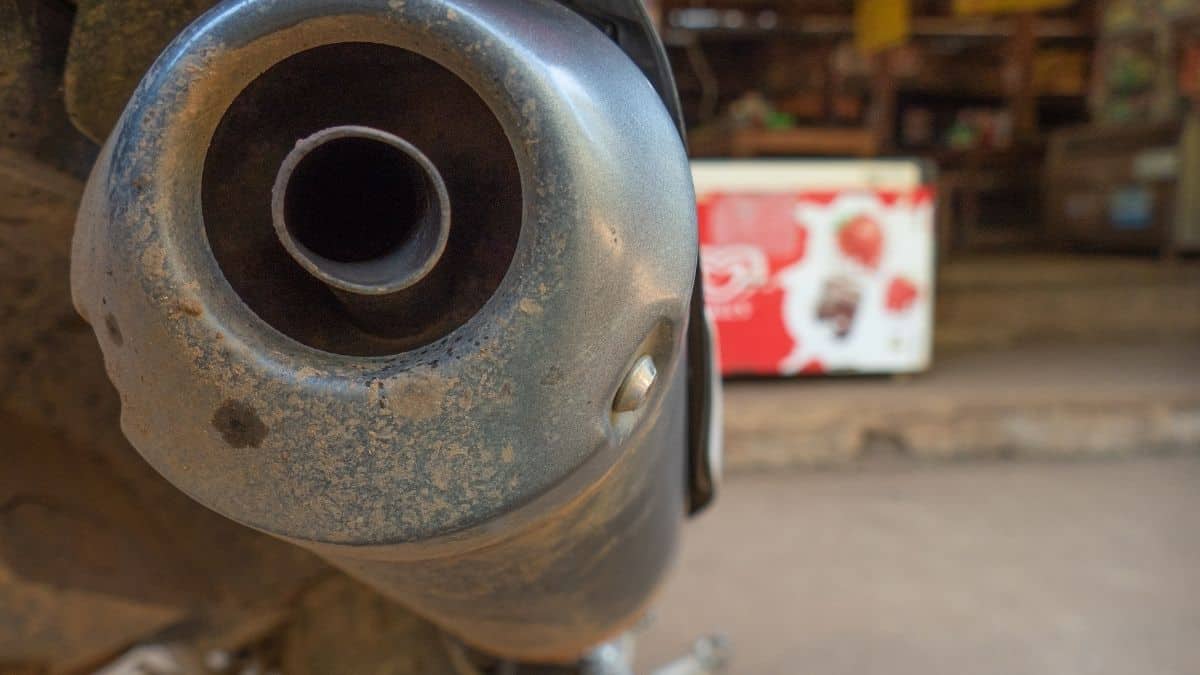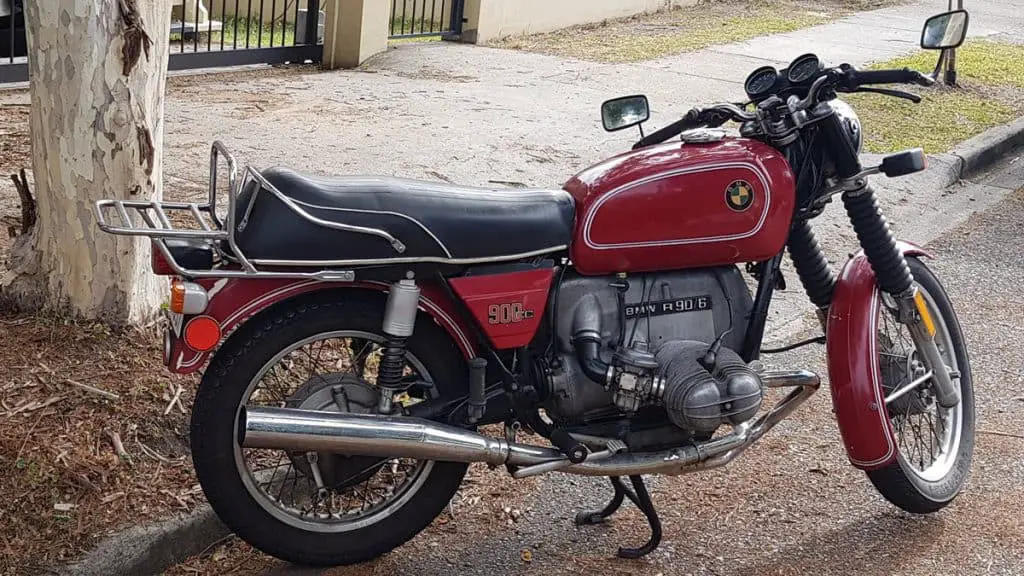Slip On vs Full Exhaust: A Closer Look [+ Which Is Better for You]
Let me assume you are tired of the performance and sound from your stock exhaust and dream of turning your motorcycle into the street version of a fire-breathing dragon.
Do you choose a slip on vs full exhaust replacement?
Actually, that depends on what your requirements are. Both systems have their own pros and cons.
To help you understand better I will throw some light on both types in this article.
Let’s get down to business.
Related Post: What Are Exhaust Wraps & What Do They Do [Plus Pros & Cons]
Slip On vs Full Exhaust Difference
To start with, we need to understand the various sections of a typical motorcycle exhaust system.
The exhaust system has three parts. It originates from the header that collects the gases exiting the engine chambers. Next is the mid-pipe section that contains the collector, the catalytic converter, the exhaust sensors, and valves. The last segment is the wider part called the muffler or the “can” that contains sound bafflers.
Now, the slip-on exhaust kit replaces the muffler portion of the assembly. And it’s less restrictive than the original muffler.
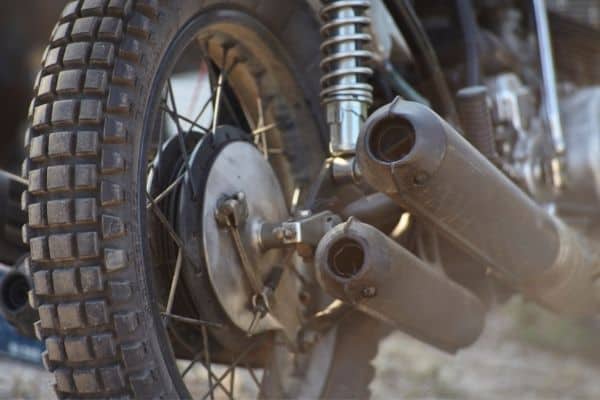
Also, it’s easy to install. Just remove the muffler and fix the new unit by tightening some hardware.
If you select the right model, chances are your machine will be growling much louder than before.
Besides, when it comes to enhancing the looks, the slip-on exhaust works like a charm. From retro and vintage designs to futuristic models, you can pick from a wide variety of designs.
What about performance improvement?
Not so much. Slip-on exhausts hardly offer any significant gain in horsepower.
If aggressive looks and a louder rumble are what you are looking for, a slip-on exhaust will offer the right bang for your buck. In fact, the affordable price and the modular design are two aspects that make slip-on exhaust so popular.
A slip-on system can cost anything between $200 up to $500, excluding the installation charges.
But what if you’re hungry for more power? (No pun intended!)
Then choosing a full system exhaust is your best bet.
But I’m jumping ahead. (I guess too much binge-watching through the night can have that effect.)
There’s something else.
Some riders prefer a half system of a Decat system. Here, the stock headers are left intact and the new muffler arrangement is connected after that.
The term “decat” indicates the catalytic converter that’s removed from the exhaust assembly in this type of arrangement. Truth is, the catalytic converter is the most restrictive part of the exhaust system and generates a lot of heat. So, removing it will boost the performance.
This also leads to better weight shedding from the motorcycle. That will help in improving the performance and the handling as well.
But keep an eye on the emission regulations in your area before you get rid of the catalytic converter. You don’t want to end up fined for a shiny new exhaust.
Note, the fuel and ignition systems have to be retuned to match the new exhaust system. Many riders use separate engine tuning modules for this purpose.
Back to what I was saying: a full system exhaust.
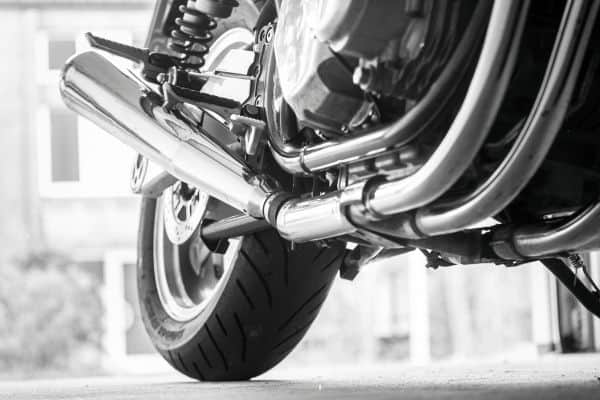
Now, this is a complete rehauling of the total exhaust system of your motorcycle. This arrangement can provide a performance boost depending on the bike. Since these systems are lighter than factory-installed exhausts, you also get significant weight savings.
But before you plan to rev to the moon, note…
With an entirely new system, you also need to adjust the air-fuel ratio that enters the engine to get the best performance.
For carbureted bikes, a jet kit will be needed to adjust the carburetor’s fuel delivery. For fuel-injected motorcycles, a fuel controller will be necessary
One more thing…
A top to bottom change can also affect the lean angle of the motorcycle. By how much and with what end results, will vary from bike to bike.
That said, if you’re a casual rider, it’s not something you need to worry about.
On the downside, the process is more expensive. A complete replacement can cost you around $1000 or more, depending on your model. Also, the installation needs more time and experience. So best get it done by a certified mechanic.
Slip-Ons vs Full Exhausts for Harleys
Let me guess…
You own a Harley and are not so sure about tinkering with the factory exhaust system.
And you’d be right.
The fact is, designing the exhaust system takes up loads of R&D hours for any manufacturer, especially for a top brand like Harley. So be it a Harley Sportster or a Kawasaki Ninja, don’t underestimate the performance of the stock exhaust assembly.
But you may want to take it to the next level with those fancy carbon fiber or titanium pipes, and cut some weight as well. Then you can surely go for an aftermarket exhaust system.
Generally, a slip-on muffler is a great pick for any street bike. They will give you better sound and you won’t need to spend extra to upgrade the fuel controller.
Full Exhaust System vs Slip-on: Pros and Cons
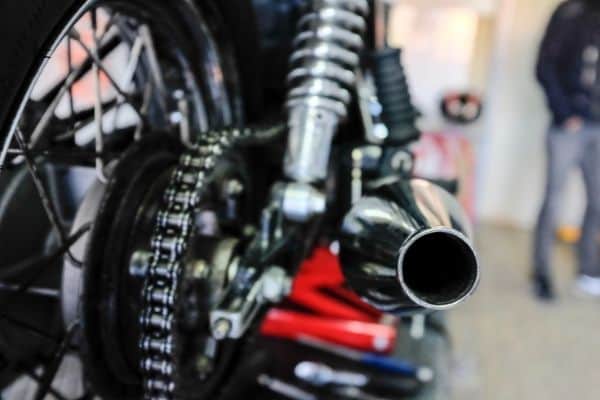
Here’s a quick look at the main pros and cons of both exhaust systems.
Full Exhaust Systems
Pros
- Improves performance and torque output
- Enhances the overall look of your bike.
- Removing the stock exhaust hardware can result in weight saving
Cons
- It’s more expensive
- Installation is complex and needs more time and experience.
- Some race systems are not legal for street use
Slip-on System
Pros
- Easy to install
- Affordable price
- Improves noise output and the looks
Cons
- No real gain in performance
- Does not cut weight
So, which one should you choose?
As I said, it depends on what you want.
If you’re looking for stylish looks and a louder sound for a fun time on the road, a slip-on exhaust is good enough. And modern stock exhaust assemblies do a great job of delivering power across a wide band.
But if serious performance gain is what you want, then replacing the full exhaust system is the best choice.
The key is to use an exhaust system that is in tune with the engine.
Frequently Asked Questions
Are slip on exhausts bad for motorcycles?
No, they don’t have any adverse effect on your motorcycle engine or performance.
Is full exhaust better than slip on?
If you’re looking for an improvement in performance, a full exhaust system is better. However, you need to tune the fuel intake to get positive results.
Is a full system louder than a slip on?
A full system that comes without a catalytic converter is usually louder. But make sure it’s approved by the regulations.

